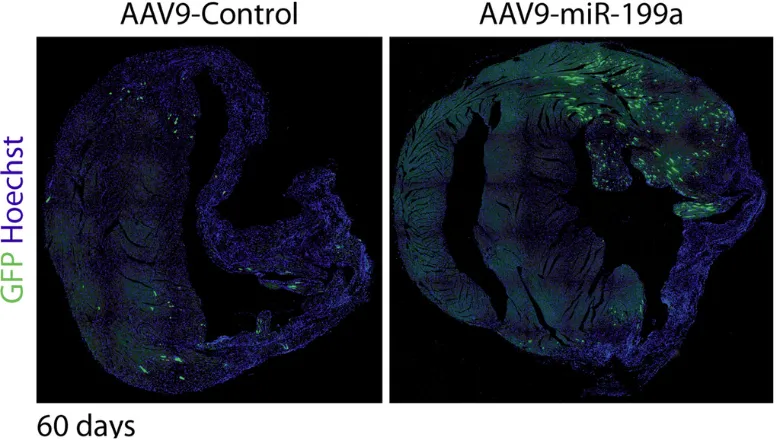I am very excited by the possibility of monitoring the process of cardiomyocyte replication. The time has come when cardiac regeneration is becoming possible by using new RNAs and genes that reprogramme human cardiac cells to divide. CycleTrack is a very important tool to monitor this process.”
Professor Mauro Giacca
03 April 2025
New technique maps out regenerating heart cells
A technique that makes new heart cells permanently fluorescent could accelerate progress in developing therapies that cause parts of the heart to regenerate.

Named CycleTrack, the technique makes heart cells glow green when they enter the process for replication. This helps researchers investigating treatments that stimulate heart cells to regrow learn more about how they work.
Cardiac regeneration remains a ‘holy grail’ treatment for the large number of patients with heart failure. This condition now affects almost one million people in the United Kingdom and 65 million people in the world. A key reason for heart failure is the death of cardiomyocytes, which are the cells that are responsible for pumping blood around the body and rhythmically contract with every heartbeat. The loss of these cells can occur for a number of reasons, such as due to a heart attack, untreated hypertension, certain medications or a viral infection. In heart-related conditions that occur suddenly, the surviving cardiomyocytes do not replicate. However, this process can be stimulated by genetic interventions.
Published in Nature Cardiovascular Research, the study by Mauro Giacca, Professor of Cardiovascular Sciences, and his team has shown how CycleTrack enables the monitoring of cardiomyocyte replication. Dr Ilaria Secco, a post-doc in the Giacca Lab, and her colleagues engineered cardiomyocytes to become permanently fluorescent when they replicate. Using a microscope to study the cells, the technique allowed them to visualise the portion of the heart that forms again upon treatment. CycleTrack holds great potential for research that aims to identify novel therapies that stimulate cardiac regeneration.
Professor Giacca continued: “In our experiments, it has been exciting to see the regenerative effect of some small RNAs that we have already identified for their property to stimulate cardiomyocyte division.”
The researchers engineered cardiomyocyte cells so that when they replicate, they activate expression of a protein that leads to permanent rearrangement in the genome. This causes the expression of a green fluorescent genenamed GFP. They named the technique CycleTrack because it genetically marks and tracks the cells that enter the cell cycle for replication.

CycleTrack will be used extensively for the activities of the newly established Centre of Excellence for Advanced Cardiac Therapies (REACT), a £50 million initiative of the MRC and BHF aimed to develop gene-based therapies for cardiac repair and regeneration.
REACT is a collaborative effort between King’s, the University of Oxford and the University of Edinburgh. Professor Giacca, who leads the Centre, is confident that the first therapies for cardiac regeneration could reach clinical testing in the next five years.

